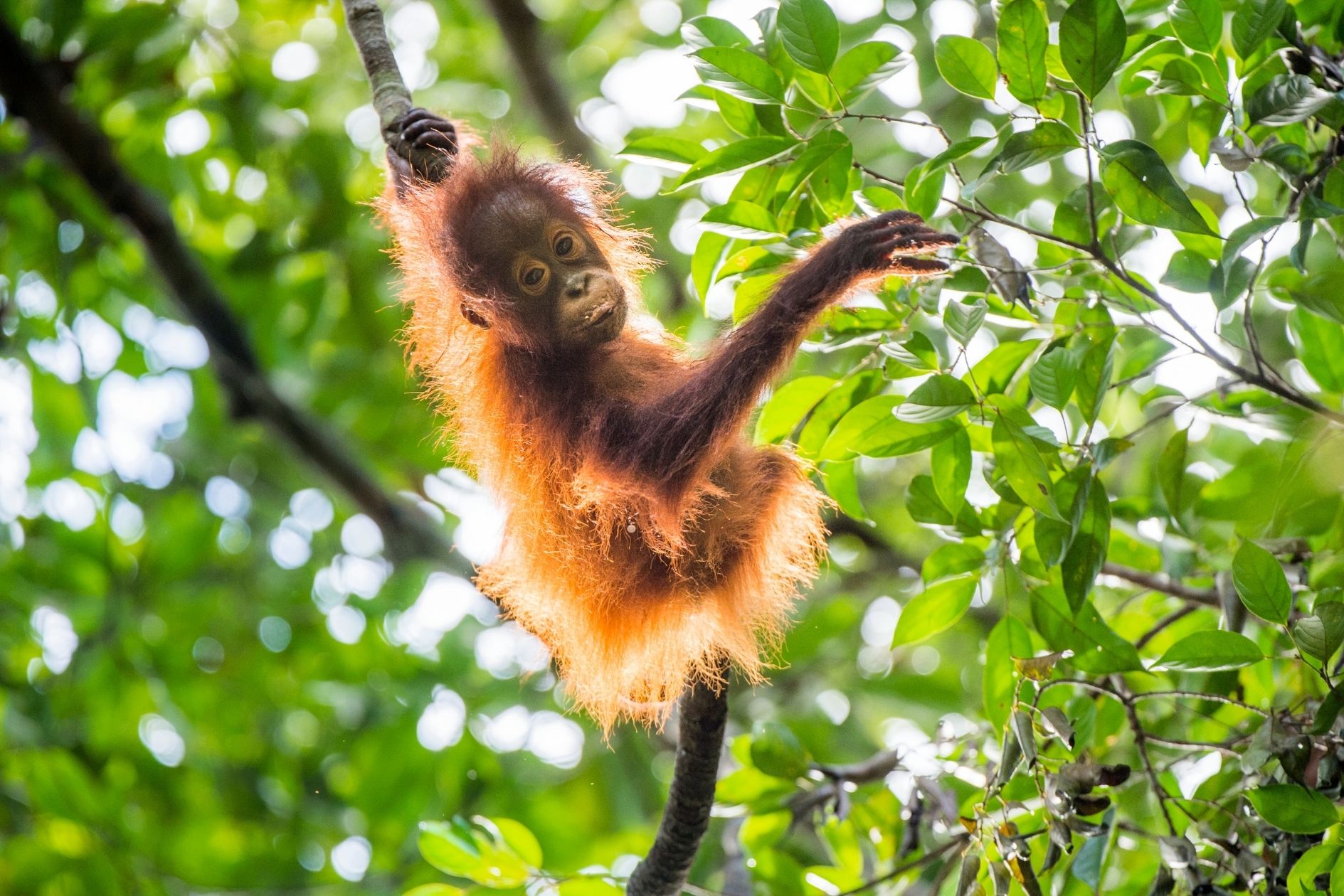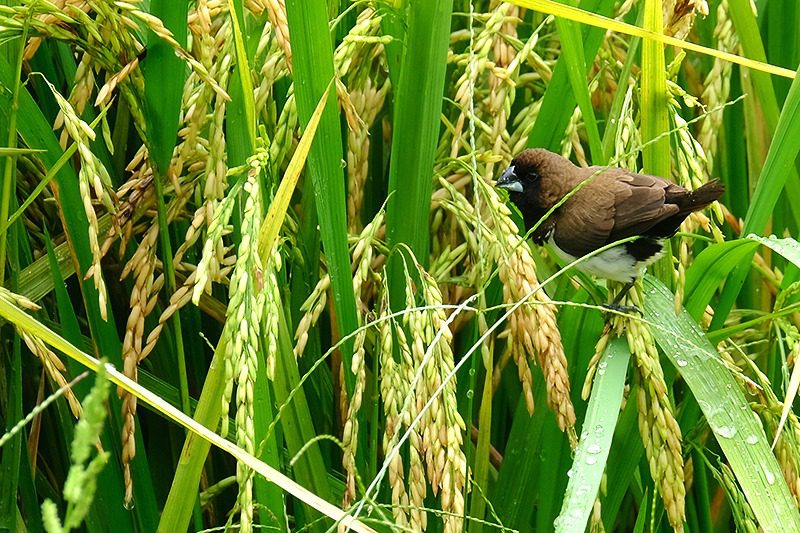Saving the Few, Conserving the Many

-
Date:
08 Dec 2021 -
Author:
KEHATI
| WRITER | |
|
Various efforts have been done by many parties, including scientists, the government, and the general public, to protect living beings along with their environment. Some of them are awareness efforts through campaigns in the form of commemoration days. These include various environmental issue-related days, such as the World Wildlife Conservation Day, commemorated every 4th of December. This day was the initiative of Hillary Clinton when she was the Minister of Foreign Affairs during the first period of Barack Obama’s presidency. Hillary, who spoke at the Foreign Department Seminar on Wildlife Trade and Conservation on November 8, 2012, said that one of the issues facing the world today is wildlife trade.
In short, establishing Wildlife Conservation Day aims to increase the awareness and involvement of endangered species or under the threat of extinction due to poaching, trade, and other environmental factors. Wildlife conservation itself is the action to protect endangered and almost extinct species by conserving their natural habitat. |
 Biodiversity observer and Ecological professor at the Department of Biology, UNDIP |
Actually, how is the wildlife threat situation in the world today that everyone needs to be concerned with? Let’s refer to the data from IUCN, International Union for Conservation of Nature and Natural Resources. Through the IUCN Red List, which contains information on the global extinction risk status of animals, fungus, and plant species. The latest data shows that there are at least 26% species of mammals, 14% birds, 41%, amphibians, 37% sharks and stingrays, 33% coral reefs, and 34% conifers suffering from the risk of extinction. Keep in mind that these numbers only cover six groups and 28% evaluated species. There are millions of other species not yet evaluated, and this list will most likely be longer.
What about the condition of wildlife in Indonesia? Based on the data from CBD (Convention on Biological Diversity), Indonesia is one of 17 megadiverse countries, with 2 of the 25 world’s “hotspots”, 18 eco-region Global 200 from World Wildlife Fund, and 24 endemic bird areas from Bird Life International. Its riches include 10% of the world’s flower species (estimated about 25,000 species, 55% endemic) and about 515 mammal species (12% of the world) are in Indonesia, placing second after Brazil. Then, 781 reptilian species (16% of the world) and 35 primate species have put Indonesia in fourth place globally. Furthermore, 1,592 bird species (17%) and 270 amphibian species have placed Indonesia in the fifth and sixth rank, respectively, in the world. A quiet glorious biodiversity riches.
However, on the other hand, the pride of these biodiversity riches is accompanied by concern. Still referring to the data from IUCN Red List, there is a significant number for the wildlife conservation status in Indonesia. There are around 2,083 species at the risk of extinction, where 1,020 of them are endemic. If we examine further, there are 1,085 species (52.1%) that are vulnerable, 640 species (30.7%) that are endangered, and 358 species (17.2%) in critically endangered conditions. In more detail, these 2,083 species consist of 856 plant species and 1,225 animal species. The animal species consist of 132 mammal species, 108 bird species, 24 amphibian species, 19 reptilian species, and other groups with endangered status. Looking from the habitat perspective, there are around 1,396 terrestrial species (56.8%), 449 freshwater species (18.3%), and 408 marine species (16.6%).
The next question is, after looking at the myriad of species under the risk of extinction, what conservation efforts have been done by the state? Conservation itself can be viewed from two interrelated angles, species and habitat conservation. The government has made legal products related to conservation efforts, beginning with Law Number 5 Year 1990 on the Conservation of Biodiversity Resources and their Ecosystems. Then came Government Regulation Number 7 Year 1999 on the Conservation of Plants and Animals. Finally, the Minister of Environment and Forestry Regulation Number P.106 Year 2018 on Types of Protected Plants and Animals, includes a list of 904 protected plant and animal species. From a habitat standpoint, until 2019, Indonesia had 544 conservation areas. These areas covered 212 nature preserve units, 79 wildlife preserve units, 54 national park units, 133 natural tourism park units, 34 forest park units, 11 hunting park units, and 31 units of nature sanctuary-nature preserve areas.

Will it suffer the same fate as the now rare Java Sparrow?
Photo by Karyadi Baskoro
If we look further back, legal products on conservation are not new at all. They have been around since the Dutch colonial era, and have become the basis of our current legal products. For example, in 1910, the Law on Protection for Wild Mammals and Birds (Ordonnantie tot Bescherming van sommige in het levende Zoogdieren en Vogels) was issued. This was the first species protection regulation in Indonesia. This was followed by the issuance of Law on Natural Monuments/Natural Preserve (Natuurmonumenten Ordonantie) in 1916, as the first area protection regulation. Then there were Hunting Ordinance in 1931, Wildlife Protection Ordinance in 1931, Hunting Ordinance in Java and Madura in 1940, and Nature Protection Ordinance in 1941. Thus, government efforts for conservation, both on species and their habitats, deserve our appreciation, including more technical efforts, such as the effort to increase the population of 25 endangered animal species by 10%. Also the creation of the Conservation Strategy and Action Plan for several species.
What remains to be the subject of discussions or sometimes debates, is from the species conservation side. Why choose the red list approach, where some species are protected, but some are not? Why not choose the green list approach, where all species are protected, except a few? Back to the red list approach, what is the basis that decides the types of species included or excluded in the protected list? For example, a consideration that their numbers are still considered in abundance, despite being located in captivities of ex-situ (off-site). We need to rethink this through, because an ecosystem is not solely viewed from a structural side, meaning as long as the species as one of its components is considered in abundance, still exists, and is not extinct, then the problem is considered solved. The ecosystem also needs to be viewed functionally. Every species has its function in the ecosystem, whether known by science or not. It is not scientific to remove species from their natural habitat or move them all into cages, just because we do not know their roles in the ecosystem yet. We should use an optimistic approach, in that every species must have a function, instead of using a pessimistic approach, questioning a species’ function in the wild.
This pessimistic view will be more dangerous when combined with types whose population is currently plentiful in the wild. Answers like, “there are still a lot of these species in the wild”. “these species are so many and they become pests”. If there is no basic population data, the growth rate is unknown, as well as the demographic and function, how can we recklessly use (if not exploit?) them? Will species with abundant populations and not protected be safe?
Don’t let what happened to the Java Sparrow, or Lonchura oryzivora, continues to repeat with other species. Once, the population of this bird was so plentiful. So much so that they were considered as pests to paddy, and thus were not protected. Because of this, they were hunted, captured, and exploited. Then, in time, their population went down drastically and can now only be seen in a few locations. Their status has now become endangered and protected by the government.
Javan Tiger, whose legal conservation status is considered to be extinct, also experienced the same fate. Currently, the species conservation law only knows the category of protected and not protected. In the colonial era, the categories were far beyond that. During the ordinance of the Dutch colonial government, animal status was divided into protected (cannot be hunted); beautiful animals, migratory animals, and pests (can be hunted under specific provisions). Now, during this era, Javan Tigers were included as pests, along with boars and similar animals. So, hunting tigers was normal, while the control of their population status was unclear. The massive hunting concerned Hoogerwerf, who in 1952 stated that “until when can we still see tigers roaming and leave their tracks along the coasts of Java”. The concern was finally proven.
Java Sparrow and Javan Tiger are just two examples. Other species are suffering from a similar fate. It is also likely that species types currently not protected, abundant in population, whose population’s biological aspect is not studied (because it is not a priority), plus uncontrolled exploitation, will be next in line after them. Only when these species are endangered will people start to panic and regret sinks in.
Therefore we should be wiser. We should still help those types that are already endangered and maintain the existence of those with abundant populations. In the medical world, we have a slogan: it is better to prevent than to cure. Why don’t we apply it in the conservation world?
